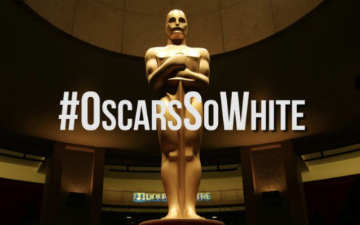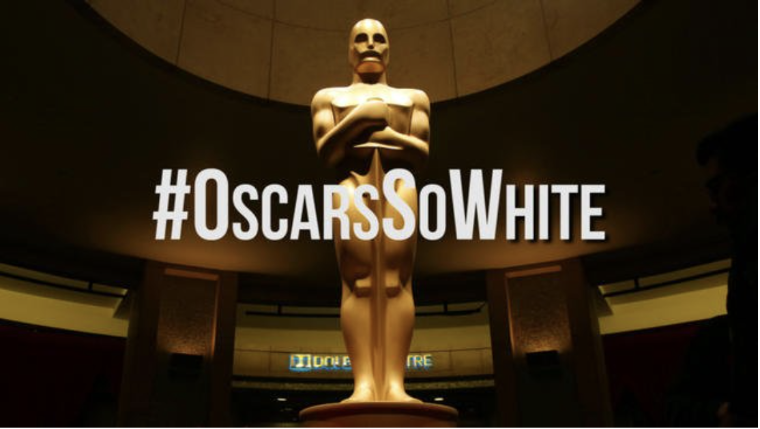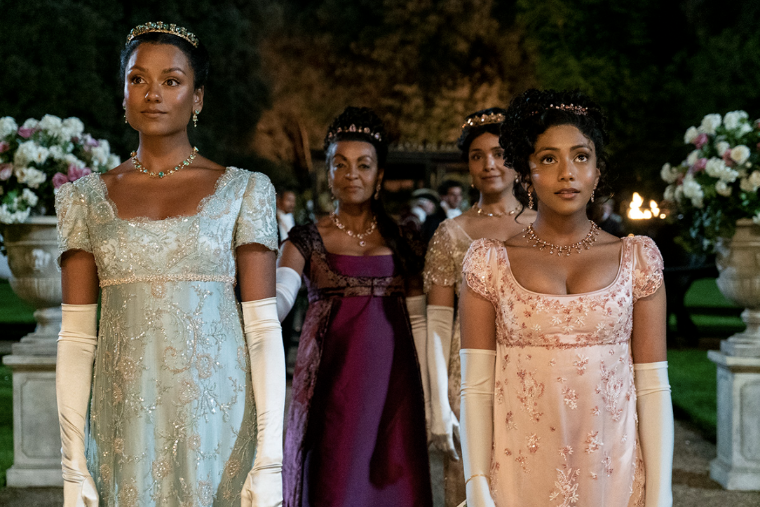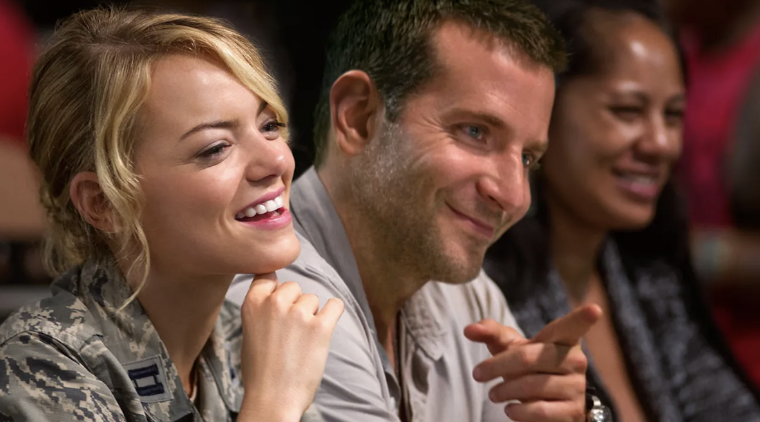
Viral Twitter hashtag coined by April Reign following the 87th Academy Awards, photo courtesy of the LA Times.
Vicky Pham ’23 majored in communication with creative writing and Asian American studies minors, and was a 2022-23 Hackworth Fellow with the Markkula Center for Applied Ethics at Santa Clara University. Views are her own.
Introduction
While the usual festivities and celebration surrounding the annual Academy Awards, otherwise known as the Oscars, commenced on the silver screen, perhaps what has emerged to be an awakening for Hollywood was gaining traction behind the scenes. #OscarsSoWhite, first tweeted in 2015 by April Reign, a then campaign finance lawyer, catapulted to virality from Twitter to mass media in response to the announcement of nominations for the 87th Academy Awards where only white persons were nominated across the four major acting categories (Best Actor, Best Actress, Best Supporting Actor, Best Supporting Actress) for the second consecutive year in a row. Backlash poured in from all corners of the Twittersphere by filmmakers and film goers alike, echoing Reign’s sentiment. The Academy, along with the rest of the world, took notice. #OscarsSoWhite exists as a familiar reminder of Hollywood’s exclusionary history, one whose long-ingrained traditions have permeated still to this day.

Viral Twitter hashtag coined by April Reign following the 87th Academy Awards, photo courtesy of the LA Times.
Why We Need A Framework
Still, achieving diversity in casting brings with it a multitude of challenges for both the presenter and represented. For those doing the casting, an awareness of those they are seeking to represent is crucial in a fair and true portrayal, void of stereotypes and hidden implications that will have lasting effects on those portrayed. In other words: authenticity must equally be considered in matters of increasing or upholding diversity. This is doubly important when those groups do not possess the same cultural capital as their white counterpart—a population which has historically enjoyed a far more varied experience when it comes to their portrayal and subsequent achievement in Hollywood.
Processes Involved
The process of casting, be it for a feature length film, televised show, or staged play, is an extensive one that includes a multitude of stages and people at various levels of power. Below is a list of key terms relevant to our discussion and the definition I will be using as it relates to the framework.
CASTING: a process in which an actor or actress is selected for the role of a film, television show, or play on the basis of merit and appearance
CASTING CALL: a notice made to the public or distributed to talent agencies requesting submissions for actors and actresses for a specific role
CASTING DIRECTOR: a person hired, oftentimes by the director or a production company, to oversee the casting process of a project, duties may include putting out the casting call, preliminary selections, and holding auditions
DIVERSITY CASTING: a type of casting in which special attention to paid to the the diversity, or number of non-white straight cis men, affiliated with the project
COLOR-BLIND CASTING: a type of casting in which no attention is paid to the actor’s race or ethnicity and whether it aligns with the original character description
Exemplars
Though the concept of ethical casting may oftentimes seem ambiguous, fruitless, or—at times even—impossible, its necessity cannot be overlooked. The challenge that casting in this manner presents is the very argument for our critical examination of the current casting processes. For, how black and white should the process be for choosing how a people or group ought to be portrayed, when the very outcomes of that portrayal have historically marginalized and stereotyped these populations even further in our social hegemony?
The questions of who ought to be portrayed, how might they be portrayed, and who we get to portray them are all questions that demonstrate the intrinsic link between representation and ethics. Thus, creatives not only should—but must—think of the ethical implications at each stage of creation. This process, differing from the current casting canon, holds the critical aspect to a higher standard, expecting those who wield the power to make such casting decisions to hold—simultaneously—the awareness of the ethical implications of that choice they make.
Below are selected media products and individuals—one production company, one scripted television show, and one casting director—which serve as exemplars in the casting process.
Shondaland (Production Company)
Under the creative direction of its namesake showrunner, Shonda Rhimes, Shondaland has established itself as a pioneer in the world of television production in terms of diversity of stories—as well as of talent. The production company is home to numerous shows including Grey’s Anatomy, Scandal, How to Get Away With Murder, and its most recent venture, Bridgerton. Shondaland has been hailed for its intentional practices to increase the diversity of faces on screen, taking multiple avenues to ensure that their products reflect the “diverse society of today.” From subverting the associated faces of 19th century English royalty with Bridgerton to intentionally not including race as a part of a character description as practiced during Grey’s Anatomy. Shondaland exists as an exemplar in ethical and diverse casting practices at all stages of creation for other companies to follow.

Simone Ashley as Kate Sharma, Adjoa Andoh as Lady Danbury, Shelley Conn as Mary Sharma, Charithra Chandran as Edwina Sharma in Shona Rhimes’s Bridgerton, photo credit to Liam Daniel/Netflix.
Abbott Elementary (Scripted TV Show)
An up-and-coming series, but one that has already garnered the attention and adoration of critics and viewers alike, Quinta Brunson’s Abbott Elementary—now in its third season on ABC—is a mockumentary-style sitcom which portrays the lives of several public elementary school teachers. Inspired by her mother and modeled after her own elementary school experience growing up in Philadelphia, Brunson stressed the importance of the makeup of the school to reflect that of real time, that is, the teachers and students had to predominantly be Black. This is reflected in the casting of the show in which 5 of the 7 main characters are African American. What is particularly compelling about Abbott Elementary’s casting, however, is the makeup of those in supporting roles: the students—particularly Black students. The task of finding a regular cast of 30+ Black child actors presented a challenge to casting director, Wendy O’Brien. But rather than forgo this specific detail and cast whatever child actor was available, O’Brien utilized unconventional methods such as outreaching to companies that specialized in representing child actors or collecting referrals from family/friends, to honor the authenticity of the show and the environment it was attempting to replicate. Abbott Elementary’s commitment to accurate representation of roles—both big and small—serves as an exemplar of diverse casting practices, even when easier routes exist.
Carla Hool (Casting Director)
Whether for a film, TV show, theatrical, or musical play, casting ultimately comes down to one or a few decision makers—the casting director/s. Perhaps the most prominent and influential person involved in the casting process, the casting director is involved at all steps of the process, from minuscule decisions such as the syntax of the casting call to who—ultimately—gets the role. And for Casting Director Carla Hool, diverse and ethical representations of LatinX actors/actresses is at the forefront of each casting decision she makes. In her casting practices, Hool preaches the importance of “authenticity” in the actor’s ability to portray a certain character or culture. This means—when possible—casting an actor whose identity aligns with the identity of the character in question. Regarding stereotypes, Hool acknowledges that it is a lack of knowledge regarding a certain ethnicity or culture that drives people into creating stereotypes, such as the “spicy” or “stallion” stereotypes that plague Latinx representations. This is something Hool is actively fighting against with each casting she is a part of and is why Hool stands as an exemplar figure in the world of casting.
The Framework
Outlined below are the steps in the framework I am proposing to ensure the ethics of representation are accounted for during casting processes. This framework can be applied to a multiplicity of forms including—but not limited to—film, television, documentary, animation, play, and web series. Though minor adjustments may be made depending on the form, the framework below is intended to be a general guideline used at the creators discretion.
Write diverse stories
The first and foremost step to this framework begins prior to the project’s production at the ideation stage. To prevent the oversaturation of and dominance by white Americans which have historically characterized Hollywood, writers—simply put—must write diverse stories. This means to implore into the voices and experience of others—other races, ethnicities, other sexes, other genders, etc. The onset consideration and incorporation of these groups is fundamental to the expansion of Hollywood and the stories it is willing to tell—only if writers are willing to write them first.
Seek talent from a wide(r) pool of applicants
Oftentimes, casting can be somewhat of an exclusive process which involves the trading of names, referrals by friends, or succession from family. Moreover, traditional casting processes naturally privilege those with more connections within the industry, whether by the simple knowledge of opportunities held exclusive, or explicit/implicit favoring by a director or member of production. And historically, when the make-up of Hollywood has been largely white, this furthers the privileges enjoyed by white Americans at the detriment of actors and actresses of color.
In pursuing an ethically conscious casting process, directors and casting directors should aim to cast as wide a net as possible in seeking their talent. This intentional broadening helps to ensure that everyone who wants to and is eligible to submit, can do so without the structural barriers that oftentimes mystify the casting process. Additionally, if a certain character description cannot be found through conventional or voluntary means, outreach should be done to see if there is someone better suited for the role, perhaps glazed over by the initial search. This step demands those with the power to step up to claims of diversity and to truly seek out the persons they are attempting to represent.
Advocate first for the actors/actresses that fit the description
This step might seem like a no-brainer. Yet, time after time, this step has proven to be dispensable to the process in the eyes of many at the helm of such big box office films. Only in hindsight—rather, only after the earned backlash—does it ever seem a miscalculation or lapse in judgment as to the casting decisions in question. In 2015, Emma Stone, an actress of German, English, Scottish, and Irish ancestry and frequenter of the Oscars’ shortlist for best actress, was cast to play the role of Allison Ng in the 2015 film Aloha. Stone’s casting as Ng, a hapa haole, or of white and Hawaiian ancestry, resulted in much backlash for both the actress and project for which Stone has since apologized. Though it seems such criticism was short lived; just the following year in 2016, Stone received the Academy Award award for best actress for her role as Mia Dolan, a white woman, in the film LaLaLand.

Emma Stone as Allison Ng and co-star Bradley Cooper as Brian Gilcrest in the 2015 film Aloha, photo courtesy of Columbia Pictures.
Despite her most visible participation in the whitewashing that took place in Aloha, Stone isn’t the one to blame. When casting for ethnic roles, such as the one required in Aloha, directors and casting directors not only should, but must, prioritize as close an authentic portrayal of the given role as possible. That is not to say that only female hapa haole fighter pilots residing in Hawaii can audition—such as the role in Aloha demanded—but careful consideration of the believable replication of the embodied identity of the character by the actor should carry substantial weight in the decision-making process; the key word here being replication. As in any film, the goal is to replicate the process of living through something for yourself, hence, the numerous hurdles production will go through to make the world seem as believable as possible. Whether that be filling the world with hundreds of extras or including some type of three-dimensional effect, the intention is clear. But when a production cherry picks what aspects of a film to make believable and what aspects (i.e. the obvious presentation of a character’s ethnicity) they can afford to forgo, that is when ethics is called into question.
Fill the room with crew that reflects (or adds to) the diversity of the project
It is not enough to only cast diversely in front of the screen. In order to undergo a truly ethically representative project, one must also employ a crew that reflects the diversity of the product or—at the very least—the surrounding world in which that product is made. This is not to say that the crew must exactly match the demographics of the film—take for instance a film with a majority white cast. But the reality is, we do not have to live in a bubble or recreate demographic bubbles that already exist, and it is not a bubble in which talent is pulled from to work on these films.
If the diversity of the project stems from those solely hired and paid to give a performance in front of a camera, then diversity itself is reduced to merely that—a performance for the camera. An actor's performance is only as good as the quality of work provided by these very important people. The contributions of those working behind the scenes—that is, in the writer’s room, on set, or involved in the post production stages—cannot be understated because, ultimately, it is their unique voices, perspective, and aesthetics that are made into films. And if this perspective—that is, the contributions of everyone else working on the film—excludes diversity as a team constituting principle, what results is a mere amplification of the majority’s opinions of the minority. Projects should look to be inclusionary whenever possible; this includes the voices of people often hidden in the filmmaking process. It is not good enough to be diverse only when it will be seen. Lack of intentional and proactive inclusion, both in front and behind the camera, is ultimately exclusionary.
What to Ask About Casting (as a Consumer)?
A key measure of the success of any filmmic project is undoubtedly audience reception. The audience is present at every stage of the filmmaking process; questions of whom we are speaking to, who is the intended audience of our film, or with what group will our film most resonate, demonstrate the critical component that is a film’s audience. And though audience members might feel as if they are far removed or uninfluential to the casting choices made, their participation and power should not be understated. Thus, as the audience and consumers of these products, it is pertinent to be aware of the ethical implication of the choices we make—the films in which we support and go see. Below are questions one can ask themselves at any point in time when viewing a media product in regards to the ethics of casting.
- Who is the character (what is their gender, race, ethnicity, sexuality, social class, dis/abilities)?
- Who is cast as this character (who is the actor/actress playing the character and what are their identities)?
- How is this character portrayed within this world?
- How do they act out their agency?
- How are they treated by others?
- How is their identity at the forefront or background?
- How do they themselves embody/articulate their identity?
- Was a more authentic choice reasonably possible to portray this character and their embodied identities?
What Would Happen if You DIDN'T Use a Framework?
Allowing for such exceptions to be made—cherry picking aspects of identity or shoehorning an actor into an unlikely role—can quickly become a slippery slope. Without commitment to diversity and authenticity, storytelling would then simply become a means to justify and bolster existing narratives and portrayal of such groups. This is why a framework can be helpful to safeguard against these. The framework does not necessarily have to be the one outlined in this paper. However, conscious thought and intentional efforts in understanding and representing peoples as fairly as possible, must be involved in the process.
To cast without considering the ethical implications of such choices is to disregard the immense power and influence that is representation. Since film and television themselves are mere representations—that is, a replication of the human emotions, dynamics, and practices we might observe in society, the choice to portray a character thusly reflects the “world” in which the character inhabits just as much as our own. It would be unwise to understate the power these representations hold over us and our epistemologies. Though some may argue a utilitarian approach to casting—choosing a passable actor that fits within the scope of the story, but not giving much thought to the more intangible aspects of identity given the grace of “acting”—this approach undermines the core of why we ought to tell stories in the first place.
Conclusion
With all the media that surrounds us in society plus a heightened awareness of our place in that society, we find ourselves at a critical juncture. No longer is media; whether in the form of a movie, TV show, or play; simply a means in which we passively entertain ourselves. Within our busy lives, the stories we consume in that finite amount of time is now a conscious choice and practice in the voices we choose to consider and—perhaps most apt to the focus of our framework—the faces we choose to see. And it ought to be an ethical one as well.
Few individuals and companies have stepped up to this challenge. To varying degrees of success, their mere attempts are a key indicator of the shift that is beginning to take place in Hollywood. This shift is only the start to waves of change that will come to our screens. And though the general consumer of these products might be far removed from the casting process that puts these faces on our screen, the individual consumer possesses far more power than they know. We all possess power, a power to support and champion those media products that raise the bar for what entertainment ought to be and to critique those that don’t reach that standard. It simply takes a keen eye, incessant viewership, and an open mind to turn that possibility into our reality.
Author's Reflection
Alongside the creation of her framework, in spring quarter Pham wrote the first Act of her full-length play titled “Lipstick Pig” which incorporates themes of her research including the ethical dilemmas of casting, controlling-images, unconscious biases, the underrepresentation of minority groups in mainstream Hollywood and the collective upheaval against it.
A synopsis of Act 1 of the play: Christopher D’orsi. World-renowned street artist. Critically acclaimed. Universally beloved yet completely unknown. After the rights to his life story are sold, it is up to Jade Nguyen—a seasoned casting director with a keen eye for talent and untapped male-lead-potential—to find the right actor for this landmark role. The problem? Since Christopher D’orsi can be anyone, everyone is Christopher D’orsi. She enlists the help of her assistant casting director, Crystal—an aspiring actress with ambitions beyond being her sister’s shadow—to sift through hundreds upon hundreds of auditions. As they read through the script, peculiar details surrounding Christopher D’orsi’s characterization strike them, forcing them to confront both societal and personal biases. These biases manifest themselves in the ways the auditions are held. Whether the sisters are aware of it or not is still up for debate. One mediocre audition, yellowtail sushi, and many many celebrity cameo cancellations bring us to the final pitch in front of production executives. So…who does Jade cast?
Using the above framework, Pham then cast and directed her play for a staged reading at the New Playwright’s Festival that took place on June 7th, 2023 in the Fess Parker Studio Theater at SCU. Below are some of Pham's reflections.
The art of casting has always been a subject of intrigue for me; how one goes about choosing one actor or another, the minute subtitles that may be the difference between nailing an audition and losing out on a role of a lifetime. Talk about stakes. From a writers’ perspective, my view has always been that of objectivity—to cast the person who fulfills as close to the intended characteristics as called by the writer/script. However, being in the casting chair, I found out that that might always be the case—nor are we always able to do what is right to the extent of our best-intentions. Over the course of two days, the class and playwrights of THTR 190 held an open-audition soliciting actors of any identity/experience to come audition for a role/s in the festival. From this small pool of auditionees, I was able to find a cast that satisfied enough of my personal requirements for the roles without sacrificing too much where meaning would then become lost. This tradeoff mainly concerned the specificity of the protagonist, JADE, and her sister, CRYSTAL, who I wrote to be Vietnamese American. But as there were no Vietnamese American students that auditioned, I casted two Asian American students who, otherwise, perfectly fit the role.
Compromises—though I am hesitant to use the term, as very little, if anything, was lost—such as these are commonplace in the world of casting. My experience brought forth many legitimate challenges that come with an ethically-informed casting process. Try as we might, the perfect person possessing all the qualities we seek in a role, might not be available. Nor may they be an actor to begin with. What this experience ultimately taught me was the necessity for those creating these images to hold these responsibilities dear, to be open to casting people of all identities, abilities, experiences and for we—as the audience—to not only be receptive of it, but to encourage it through communal action.
Suggested Selected Readings on the Topic of Diversity/Casting
UCLA Hollywood Diversity Report (2021)
Assessing The Business Case For Asian-American Casting In Hollywood Films
‘Bridgerton’s’ Approach to Race and Casting Has Precedent Onstage
How ‘Abbott Elementary’ ‘unwittingly’ became TV’s No. 1 school for Black child actors